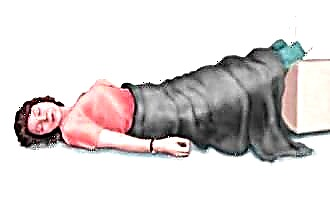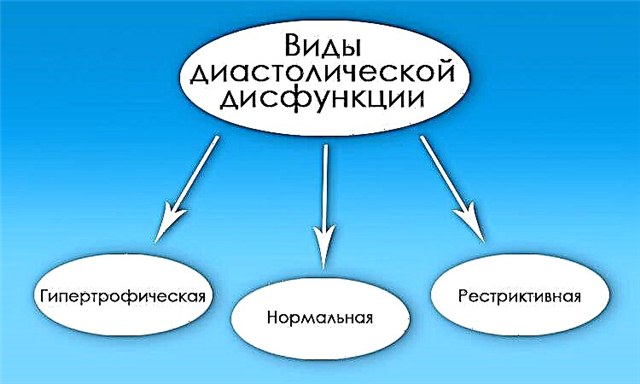Sneezing, rhinorrhea, watery eyes and itching in the nose are the main symptoms of an allergic rhinitis in a child. Unpleasant manifestations are caused by inflammation of the nasopharynx, which is provoked by allergic reactions. Young children from 3 years old quite often face allergic diseases, and in 70% of cases they are diagnosed with an allergic rhinitis.
 Harsh odors, dust, food, exhaust fumes, animal hair, pollen, etc. can cause unwanted reactions in the respiratory system. Allergy outbreaks negatively affect a child's immune defenses. In this regard, against the background of an allergic rhinitis, diseases of an infectious origin often develop - sinusitis, pharyngitis, bronchitis, frontal sinusitis, etc. Timely detection and solution of the problem can speed up the healing process and reduce the likelihood of developing bronchial asthma.
Harsh odors, dust, food, exhaust fumes, animal hair, pollen, etc. can cause unwanted reactions in the respiratory system. Allergy outbreaks negatively affect a child's immune defenses. In this regard, against the background of an allergic rhinitis, diseases of an infectious origin often develop - sinusitis, pharyngitis, bronchitis, frontal sinusitis, etc. Timely detection and solution of the problem can speed up the healing process and reduce the likelihood of developing bronchial asthma.
General information about the disease
Allergic rhinitis in children is a common disease in which there is inflammation of the upper respiratory tract, in particular the nasopharynx. When air is inhaled, the irritating agents it contains are deposited on the surface of the nasal mucosa. Unlike viruses and microbes, they are absorbed into the tissue within a few seconds, resulting in irritation and inflammation of the mucous membrane.
As a rule, in infants, allergies develop quite rarely, which is associated with the absence of a large number of irritants, i.e. allergens in the environment. But by 3-4 years of age, the incidence rate increases. Walking on the street, regular visits to kindergarten and school significantly expand the range of potentially hazardous irritants. New food products, chalk, chlorine fumes, colognes and deodorant odors irritate the mucous membrane of the respiratory tract. As a result, children may experience symptoms of allergic rhinitis.
It should be noted that children whose parents suffer from dermatitis, diathesis and any other allergic diseases are more susceptible to morbidity.
Due to a predisposition to illness, almost any substance can cause unwanted reactions in the nasopharynx - from dust to the smell of perfume.
Classification of allergic rhinitis
The manifestations of the disease largely depend on the degree of sensitivity of the body to various allergens, provoking factors and the age of the child. Babies cannot complain to their parents about itching in the nasopharynx, a sore throat and a feeling of nasal congestion. Therefore, inexperienced parents often confuse allergy symptoms with manifestations of ARVI.
The following forms of allergic rhinitis are most often diagnosed in babies:
- intermittent (hay fever) - aggravated during the flowering period of wind-pollinated plants, therefore, lasts no more than 4 weeks a year;
- persistent (year-round) - provoked by household, medicinal, plant and other types of allergens, therefore, relapses of the disease occur almost constantly throughout the year.
Fortunately, a year-round runny nose is quite rare. It occurs 4 times less frequently than hay fever.
When allergy symptoms are found, you need to find out: is there a relationship between the season and periods of exacerbation of the disease. If the characteristic signs of allergy occur only in the spring and autumn period, it may be due to hay fever.
If the allergic reaction in the respiratory system is not promptly stopped, it will lead to airway obstruction and asthma attacks.

Phases of symptoms
Some allergy symptoms appear almost immediately after contact with an irritant, others are found after a few hours or even days. Timely diagnosis of allergies can prevent further development of the disease and, accordingly, stop rhinorrhea (abundant discharge of exudate from the nose) in the rudiment itself. As a rule, the early symptoms of allergic rhinitis in children appear within 20 seconds after the penetration of allergens into the nasopharyngeal mucosa. These include:
- constant sneezing;
- burning in the nose;
- tearing;
- sore throat;
- rhinorrhea.
Late signs of ENT disease appear, as a rule, at least 4-6 hours after the outbreak of an allergic reaction.
Subsequent pathological processes in the nasal mucosa cause the manifestation of such symptoms:
- nasal congestion;
- black circles under the eyes;
- redness of the eyes;
- decreased sense of smell;
- hearing impairment;
- lethargy;
- bleeding from the nose;
- poor sleep;
- puffiness of the face;
- sensitivity to light;
- periodic cough;
- prostration.
Allergic rhinitis can cause the development of allergic laryngitis and, as a result, laryngeal stenosis.
The sooner parents suspect that a child is developing allergies, the better. Timely elimination of allergens and the use of antihistamines helps to reduce swelling and inflammation of the nasopharynx and thereby ease the course of the disease.
Clinical manifestations in infants
In the absence of a hereditary predisposition, an allergic rhinitis in infants occurs during the introduction of milk mixtures, yoghurts, semolina and other products into the diet. In addition, drugs, in particular hormonal and antimicrobial drugs, can also cause an allergic reaction. The appearance of the following symptoms can prompt parents to think about the development of allergies in infants:
- watery nasal discharge;
- often rubbing the bridge of the nose;
- periodic sneezing;
- breathing through the mouth;
- constant sneezing;
- restlessness and poor sleep;
- refusal to eat;
- redness of the conjunctiva of the eyes;
- swelling of the eyelids.
You need to understand that allergic rhinitis in a child in its manifestations is not much different from the symptoms of ARVI. That is why most inexperienced mothers begin to treat babies with antiviral agents. Parents should be alerted to the absence of high fever and lacrimation. These symptoms, in a sense, are a litmus test by which the nature of inflammatory processes can be determined.
Important! In some cases, the absence of fever signals the development of a physiological rhinitis, which does not need to be treated with pharmaceutical agents.
Symptoms of rhinitis in children from 3 years of age
Local manifestations of ENT disease in children from 3 years old are no different from the symptoms of allergic rhinitis in infants. With irritation of the nasal mucosa, young patients often complain of:
- nasal congestion;
- rhinorrhea;
- burning and itching in the nose;
- Pinching in the eyes;
- constant sneezing;
- labored breathing;
- rapid fatigue;
- sore throat;
- sleep disturbance;
- irritation of the skin above the upper lip.
Continuous mouth breathing greatly increases the risk of developing an infection in the respiratory tract. If the patency of the nasal passages is not restored in time, the child is likely to develop a cold. Due to a deterioration in well-being, irritability and apathy will increase, which can subsequently lead to depression.
Parents should be aware that inadequate and untimely assistance to the baby entails the development of chronic allergic rhinitis. Due to the constant inflammation of the nasopharynx, the mucous membrane begins to grow slowly. Subsequently, this can cause the formation of benign tumors (polyps) in the nose.
Differential diagnosis
Before using antihistamines and decongestants, you need to make sure the diagnosis is correct. There are a number of symptom-"indicators", thanks to which it is possible to exclude various diseases with similar symptoms. How to distinguish allergies from SARS?
| Clinical manifestations | Allergic rhinitis | ARVI |
|---|---|---|
| Body temperature | normal | increased (subfebrile or febrile) |
| the nature of nasal discharge | watery and transparent | thick with a yellowish tinge |
| itchy nose | is present | absent |
| duration of illness symptoms | allergic reactions occur until the patient stops contact with allergens | no more than 7 days |
| sneezing | constant (worse in the morning) | periodic |
| lacrimation | is present | absent |
| nasal congestion | constant | periodic |
| symptoms of intoxication (body aches, headaches, lack of appetite) | absent | present |
Surely, only an ENT doctor can determine the cause of rhinorrhea after examining a small patient. In the process of diagnosis, a specialist can use the following methods:
- rhinoscopy;
- endoscopy;
- blood test;
- skin allergy tests;
- rhinomanometry.
In order to find out the hereditary predisposition, the doctor may ask the parents several leading questions. If, after receiving test results, type E immunoglobulins are found in the blood, the doctor diagnoses an allergic rhinitis. Treatment of the disease involves the use of antihistamines, anti-inflammatory and immunostimulating agents.



